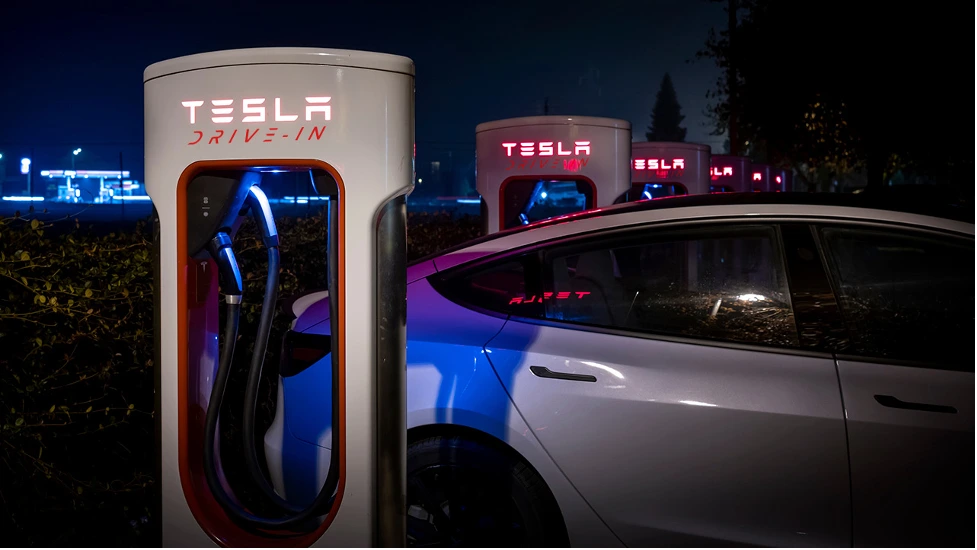US Accelerates Self-Driving Revolution: Regulatory Shifts Fuel Tesla and the Race Against China
The Trump administration has announced broad regulatory changes to accelerate the development and rollout of self-driving cars in the US, a daring attempt to regain the lead in the global autonomous vehicle (AV) race. The National Highway Traffic Safety Administration (NHTSA) and the U.S. Department of Transportation (DOT) announced the new regulations, which exempt AVs from some federal safety regulations, giving startups and automakers like Tesla and General Motors previously unheard-of flexibility to test and commercialize AVs. This regulatory change sparks important discussions about innovation, safety, and America’s future in a tech-driven world. It is presented as a response to China’s rapid advances in autonomous technology.

The New Rules: Breaking Down the Regulatory Revolution
The updated guidelines, effective immediately, mark the most significant shift in U.S. automotive regulation in decades. Key provisions include:
- Exemption Authority: Companies can now apply for waivers from specific Federal Motor Vehicle Safety Standards (FMVSS) that were designed for human-driven vehicles, such as requirements for steering wheels, pedals, or side mirrors.
- Streamlined Testing: Expanded permissions for real-world testing on public roads without mandatory human operators, accelerating data collection and system refinement.
- State Preemption: A reinforced federal stance to prevent conflicting state-level regulations, creating a unified framework for AV deployment.
These modifications directly benefit GM’s Cruise, Alphabet’s Waymo, and Tesla, whose Full Self-Driving (FSD) Beta software is still controversial. Transportation Secretary Elaine Chao emphasized that manufacturers still need to prove “equivalent safety” using sophisticated simulations and sensor-based systems, saying, “This is about removing roadblocks, not lowering safety.”
The China Factor: Why the U.S. Is Playing Catch-Up
The regulatory shift emphasizes how urgent it is for the US to challenge China’s hegemony in AV technology. China’s market for autonomous vehicles is expected to reach $500 billion by 2030, driven by:
- State-Backed Investment: Beijing has allocated billions to AV R&D, with companies like Baidu, Pony.ai, and Didi Chuxing leading the charge.
- Regulatory Agility: China’s “sandbox” approach allows rapid testing in designated cities (e.g., Shanghai, Beijing), with fewer bureaucratic hurdles.
- 5G Infrastructure: Nationwide deployment of ultra-fast 5G networks, critical for vehicle-to-everything (V2X) communication, gives Chinese AVs a connectivity edge.
“China is sprinting toward a driverless future, and the U.S. risks losing its innovation edge,” warned John Krafcik, former CEO of Waymo. Energy Secretary Jennifer Granholm recently called for “a Manhattan Project-level effort” to secure AV supremacy, echoing the Biden administration’s stance.
Tesla’s Moment: Opportunity or Overreach?
The company that stands to benefit the most from the regulatory change is Elon Musk’s Tesla. Despite being linked to NHTSA crash investigations, the company’s FSD Beta could now grow faster. Tesla’s approach is predicated on:
- Data Dominance: Over 1 million Tesla vehicles already collect real-world driving data, refining neural networks through machine learning.
- Vertical Integration: Control over hardware (e.g., custom AI chips) and software allows faster iterations than competitors dependent on third-party suppliers.
Critics counter that loose rules might make safety hazards worse. Jason Levine of the Center for Auto Safety stated, “Tesla’s ‘beta’ labeling doesn’t absolve them of accountability,” citing instances in which FSD failed to detect pedestrians or emergency vehicles.
Safety vs. Speed: The Ethical Tightrope
While proponents hail the reforms as a catalyst for innovation, skeptics warn of unintended consequences:
- Algorithmic Bias: AV systems trained predominantly in U.S. or Chinese environments may struggle in diverse global contexts, risking accidents.
- Cybersecurity Threats: Connected vehicles could become targets for hacking, with catastrophic outcomes.
- Job Displacement: The transition to AVs threatens millions of driving jobs, from truckers to taxi drivers, with inadequate retraining plans.
Watchdog organizations are still dubious of NHTSA’s assertion that exemptions will only be given for technologies that are “as safe as existing standards.” Advocates for Highway and Auto Safety’s Cathy Chase contended that it is irresponsible to disregard laws intended to safeguard pedestrians in order to increase corporate profits.
The Global Ripple Effect
The U.S. policy shift is reshaping international dynamics:
- EU Dilemma: Europe, balancing its own AV ambitions with stringent GDPR privacy laws, may face pressure to deregulate or risk falling behind.
- Developing Markets: Countries like India and Brazil could become battlegrounds for U.S. and Chinese AV exports, each promoting competing safety and data standards.
- Climate Goals: AVs, particularly electric ones, are central to decarbonizing transport—a sector responsible for 29% of U.S. emissions.
The Road Ahead: Innovation, Regulation, and the Human Cost
The AV race is a struggle of values as much as technology. The U.S. gambles on corporate innovation with little regulation, while China’s top-down model puts national objectives ahead of individual privacy. The dangers are severe:
- Winners and Losers: Urban centers may see reduced traffic and pollution, but rural areas could face job losses and inadequate AV infrastructure.
- Legal Quagmires: Who is liable when a self-driving car crashes? Current insurance frameworks are ill-prepared for the shift.
- Public Trust: A 2023 AAA survey found that 85% of Americans fear riding in fully autonomous vehicles. Transparency will be key to adoption.
Steering Toward an Uncertain Future
A turning point in the U.S.-China tech competition, the Trump administration’s regulatory reform pushes the boundaries of moral innovation while providing American automakers with a lifeline. The changes could either strengthen Tesla’s standing as an AV pioneer or reveal fatal weaknesses in its strategy. Although not assured, the prospect of safer, cleaner, and more effective roads is alluring to consumers.
One fact becomes clear as China and the United States compete for supremacy: the race for autonomy is about more than just automobiles. It concerns who will establish the 21st century’s traffic laws and whether humanity will follow suit or fall behind.
Click Here to subscribe to our newsletters and get the latest updates directly to your inbox.

